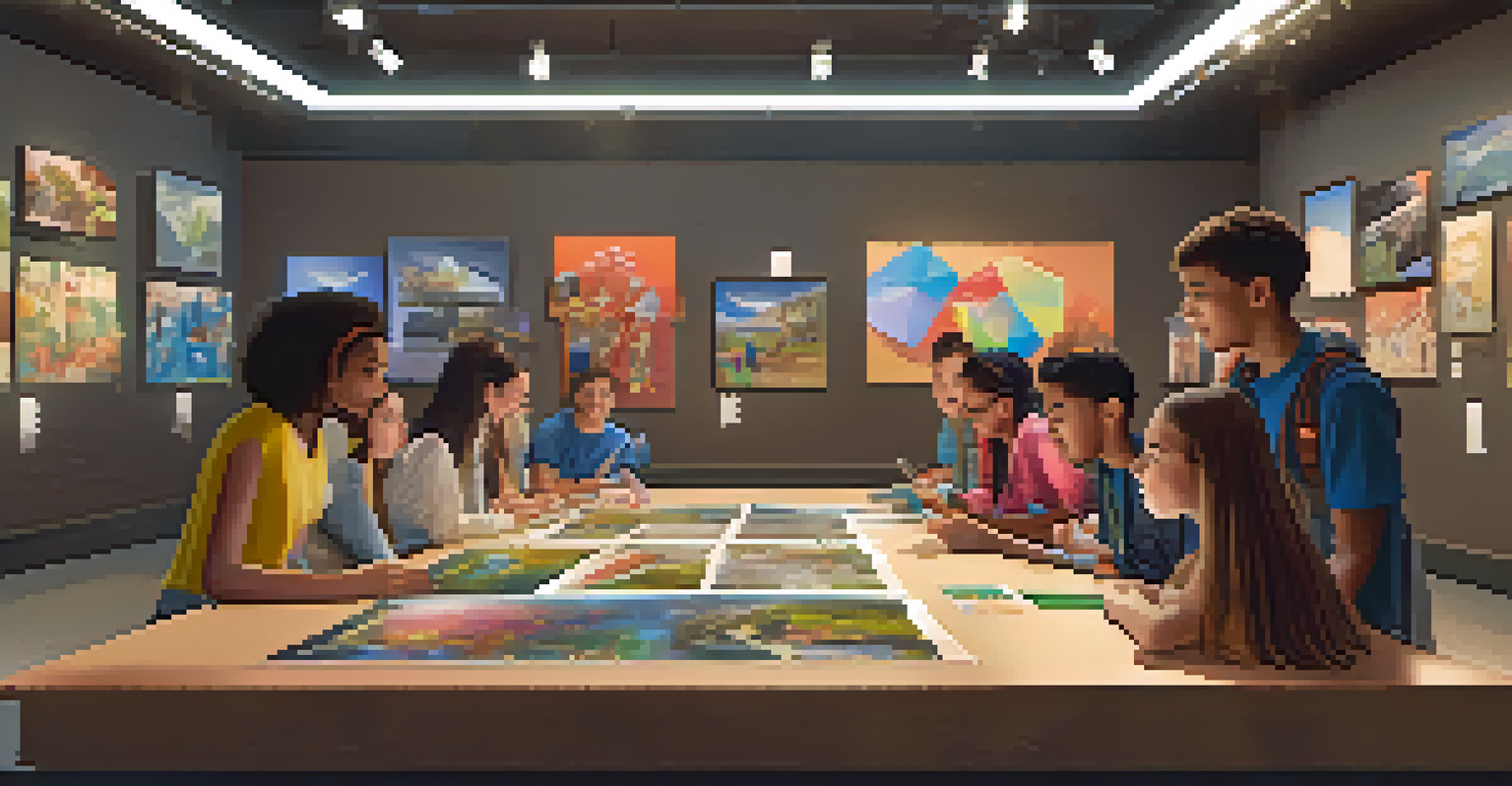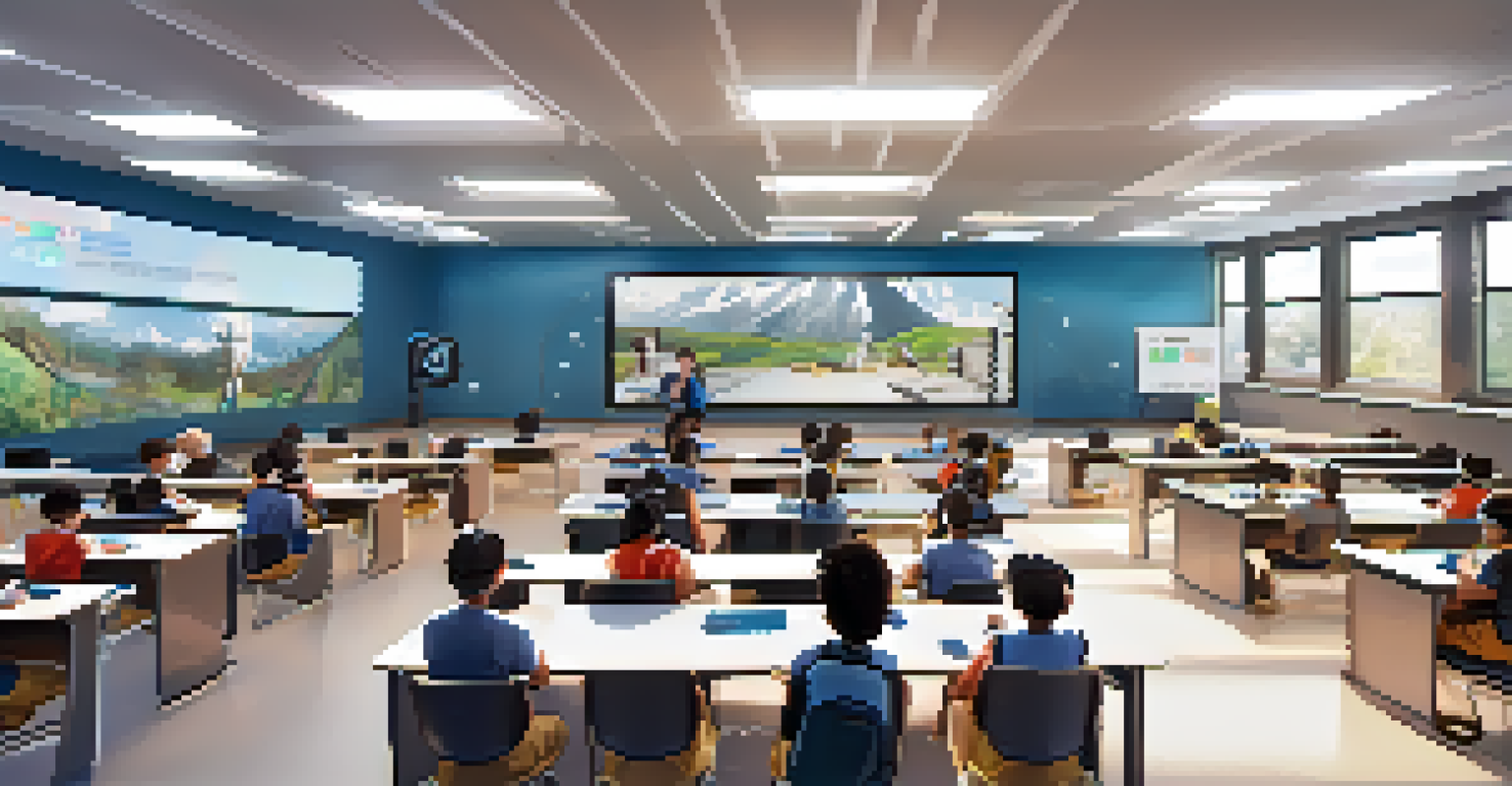Using Virtual Reality to Transform Learning Experiences

Introduction to Virtual Reality in Education
Virtual reality (VR) is reshaping how we approach learning today. By immersing students in interactive environments, VR makes education not just informative but also engaging. Imagine walking through ancient ruins or exploring the human body—these experiences are now possible through VR technology.
Virtual reality allows us to experience things we could never experience in real life. It takes us beyond the constraints of our physical world.
This innovative approach allows learners to visualize complex concepts in a way that traditional methods cannot. Instead of reading about a subject, they can experience it firsthand, which often leads to better retention of information. As we dive deeper into this topic, let's explore the various applications of VR in learning.
Furthermore, with the increasing accessibility of VR tools, educators have more opportunities to integrate these experiences into their curriculums. This shift not only excites students but also prepares them for a future where technology plays a crucial role in everyday life.
Enhancing Engagement through Immersive Learning
One of the standout benefits of VR in education is its ability to enhance student engagement. When learners are fully immersed in a virtual world, they are more likely to be focused and involved compared to traditional classroom settings. This heightened level of engagement can lead to a more profound understanding of the subject matter.

For example, medical students using VR can practice surgical procedures in a risk-free environment. They can make mistakes, learn from them, and repeat processes until they feel confident. This hands-on experience is invaluable and gives students a taste of real-world scenarios without the pressure.
Moreover, VR caters to various learning styles, ensuring that visual, auditory, and kinesthetic learners all benefit from the experience. By creating a more engaging atmosphere, educators can foster a deeper love for learning among students.
Bridging Geographic and Cultural Gaps
Virtual reality can also bridge geographic and cultural gaps in education. With VR, students from different parts of the world can collaborate and learn together, breaking down barriers that distance once created. This not only enhances learning but also broadens perspectives.
Technology will not replace teachers, but teachers who use technology will replace those who do not.
Imagine students from various countries exploring a virtual museum exhibit together, discussing art pieces, and sharing cultural insights. Such interactions foster a sense of global community and understanding that traditional classrooms often lack.
By exposing students to diverse cultures and viewpoints, VR encourages empathy and critical thinking. This global approach to learning prepares students for a more interconnected world, equipping them with skills essential for future success.
Practical Applications of VR in Education
The applications of VR in education are vast and varied. From history lessons where students can virtually attend significant events to science classes that allow them to explore the solar system, the possibilities are endless. Each application brings a unique twist to learning, making education more relatable and exciting.
In language learning, for example, VR can immerse students in a virtual environment where they must use their language skills to navigate real-life situations. This practical application helps reinforce language acquisition by placing students in context-rich scenarios.
As educators continue to explore these applications, we can expect to see an increase in tailored VR experiences that cater to specific curriculum needs. This adaptability is key to maximizing the effectiveness of virtual learning.
Overcoming Challenges in VR Implementation
While the benefits of VR in education are clear, there are challenges to consider. One major hurdle is the cost of technology and the need for adequate infrastructure. Schools must assess their budgets and resources to determine how they can integrate VR effectively into their curriculums.
Additionally, teachers may require training to effectively use VR tools in their lessons. Without proper guidance, the potential of VR may not be fully realized. Investing in professional development for educators is crucial for successful implementation.
Despite these challenges, many institutions are finding creative solutions. By starting small and gradually incorporating VR, schools can ease into this new technology and allow time for both students and teachers to adapt.
The Future of VR in Learning Environments
Looking ahead, the future of virtual reality in education is promising. As technology continues to advance, we can expect VR experiences to become even more immersive and realistic. This evolution will likely change how we think about education and learning outcomes.
In the coming years, we may see VR becoming a standard component in classrooms, not just an add-on. This integration could revolutionize curriculum design, making learning more dynamic and interconnected.
Moreover, as more educational institutions adopt VR, we might witness a significant shift in how assessment and learning are approached. The emphasis could move from rote memorization to experiential learning, where students demonstrate understanding through practical application.
Conclusion: Embracing the VR Learning Revolution
In conclusion, the integration of virtual reality into education holds immense potential. By enhancing engagement, bridging gaps, and offering practical applications, VR is transforming traditional learning experiences into something extraordinary. Students are no longer passive recipients of information; they are active participants in their learning journeys.
As educators and institutions embrace this innovative technology, it is essential to remain open to continuous learning and adaptation. The landscape of education is changing, and those who are willing to explore and implement VR will lead the way.

Ultimately, the goal is to create a learning environment where students feel empowered, inspired, and equipped with the skills they need to thrive in a rapidly changing world.